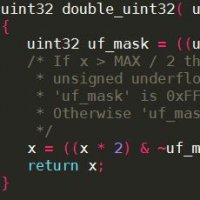Continuing the series of blog posts on optimizing embedded software with the aim of improving (i.e. reducing) worst-case execution times, this week’s topic is removing code from the worst-case path.
Software optimization techniques which improve worst-case execution times #15: Removing Code From the Worst-Case Path
A useful approach to take when attempting to minimise the worst-case execution time is to review the code on the worst-case path, asking whether all the code found on that path implements functionality that is essential or whether some of it could be carried out elsewhere.
There are two commonly used constructs that can lead to unnecessary code appearing on the worst-case path. These are if…else if…else and switch statements.
Example: if-else if-else
if(length == 0)
{
/* process empty message */
}
else if(length < 50)
{
/* process short message */
}
else if(length < 100)
{
/* process medium message */
}
else
{
/* process long message */
/* worst-case path */
}
Consider the code in the example above. Let us assume that the worst-case execution time of the code has been analysed and that the code in the final else branch, used to process long messages, is on the worst-case path. To reach the final else branch, each of the three conditions needs to be evaluated. However this is unnecessary. The code could be reordered so that the first condition evaluated is (length >= 100) as shown below. Although the re-ordered code implements exactly the same functionality, the evaluation of two conditions has been removed from the worst-case path. Note that this optimisation could be the exact opposite of optimising for best average-case behaviour; for example if empty messages are the most common.
Example: Re-ordered conditions
if(length >= 100)
{
/* process long message */
/* shorter worst-case path */
}
else if(length >= 50)
{
/* process medium message */
}
else if(length > 0)
{
/* process short message */
}
else
{
/* process empty message */
}
Switch statements are often expanded by the compiler into what is effectively a long series of if…else if…else constructs. Here, the same style of optimisation can be applied. The case branch that is on the worst-case path should be placed first in the switch statement. It is wise to check the compiler documentation or assembler code produced to determine how switch statements are implemented and to ensure that the order in which the cases are implemented is as expected.

 Hybrid electric pioneers, Ascendance, join Rapita Systems Trailblazer Partnership Program
Hybrid electric pioneers, Ascendance, join Rapita Systems Trailblazer Partnership Program
 Magline joins Rapita Trailblazer Partnership Program to support DO-178 Certification
Magline joins Rapita Trailblazer Partnership Program to support DO-178 Certification
 Eve Air Mobility joins Rapita Systems Trailblazer Partnership Program for eVTOL projects
Eve Air Mobility joins Rapita Systems Trailblazer Partnership Program for eVTOL projects
 How to certify multicore processors - what is everyone asking?
How to certify multicore processors - what is everyone asking?
 Data Coupling Basics in DO-178C
Data Coupling Basics in DO-178C
 Control Coupling Basics in DO-178C
Control Coupling Basics in DO-178C
 Components in Data Coupling and Control Coupling
Components in Data Coupling and Control Coupling
 DO-278A Guidance: Introduction to RTCA DO-278 approval
DO-278A Guidance: Introduction to RTCA DO-278 approval
 ISO 26262
ISO 26262
 Data Coupling & Control Coupling
Data Coupling & Control Coupling
 Verifying additional code for DO-178C
Verifying additional code for DO-178C
 DO-178C Multicore In-person Training (Bristol)
DO-178C Multicore In-person Training (Bristol)
 DO-178C Multicore In-person Training (Fort Worth, TX)
DO-178C Multicore In-person Training (Fort Worth, TX)
 DO-178C Multicore In-person Training (Toulouse)
DO-178C Multicore In-person Training (Toulouse)





















